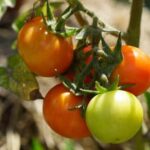Are you tired of replanting your vegetable garden every year? Have you heard about the benefits of perennial vegetables but don’t know where to start? Look no further. This article will provide you with all the information you need to get started on your own perennial vegetable garden. Perennial vegetables are an excellent addition to any garden, providing a sustainable source of fresh produce year after year. From asparagus to rhubarb, there are plenty of options for gardeners worldwide.
Perennial vegetables have been gaining popularity in recent years due to their low maintenance nature and long-lasting benefits. Unlike annual vegetables, which need to be replanted each spring, perennial vegetables can survive for several years, making them an attractive option for busy gardeners looking for a more sustainable approach. In this article, we will explore the many benefits of growing perennial vegetables in your garden and provide tips on how to start and maintain a successful perennial vegetable plot.
Whether you’re a seasoned gardener or just starting out, there is a wide variety of popular perennial vegetables that can thrive in different climates and soil types around the world. From artichokes to horseradish, these versatile plants can add interest and flavor to your garden while providing a reliable source of fresh produce.
In the following sections, we’ll take a closer look at some of the most popular perennial vegetables for gardeners worldwide, so you can decide which ones are right for your own garden.
Benefits of Growing Perennial Vegetables in Your Garden
There are numerous benefits to be gained from growing perennial vegetables in your garden, making them an excellent addition to any gardener’s world. One of the key advantages of incorporating perennial vegetables into your garden is their ability to save time and effort. Unlike annual vegetables, which need to be replanted each year, perennial vegetables come back on their own, year after year, reducing the need for continuous re-planting and maintenance.
Another benefit of growing perennial vegetables is their ability to improve soil health. Perennial plants establish deep root systems that help prevent soil erosion and increase the soil’s overall fertility. These deep root systems also make perennial vegetables more resilient during drought conditions, making them a sustainable choice for your garden.
Furthermore, growing perennial vegetables can also contribute to a more diverse and resilient ecosystem in your garden. By providing food and habitat for beneficial insects, birds, and other wildlife, these plants can help create a balanced and healthy environment.
This not only benefits the garden itself but also has positive effects on the surrounding natural landscape. With these benefits in mind, it’s no wonder that more and more gardeners around the world are turning to perennial vegetables as a valuable addition to their gardening endeavors.
Popular Perennial Vegetables for Gardeners Worldwide
When it comes to choosing which perennial vegetables to grow in your garden, there are plenty of options to consider. These vegetables not only offer a continuous harvest year after year but also provide a variety of flavors and nutrients. Here are some popular perennial vegetables that gardeners around the world love to grow:
1. Asparagus: Asparagus is a delicious and highly sought-after perennial vegetable that can produce for up to 20 years when well-maintained. It is a favorite among gardeners for its tender spears and unique flavor.
2. Rhubarb: Known for its tart flavor, rhubarb is a hardy perennial vegetable that thrives in cooler climates. It’s versatile in the kitchen, used in both sweet and savory dishes, making it a popular choice for many gardeners.
3. Horseradish: Horseradish is a low-maintenance perennial vegetable that provides pungent roots commonly used as a spicy condiment or seasoning. Its resilience makes it a staple in many perennial vegetable gardens.
4. Artichokes: Although they require a longer growing season, artichokes are highly prized by gardeners for their delicious edible flower buds. They add an elegant touch to any garden while offering a gourmet treat.
5. Sorrel: This tangy and lemon-flavored leafy green is a versatile perennial vegetable that can be used fresh in salads or cooked into soups and sauces. Its unique taste makes it highly sought after by chefs and home cooks alike.
These popular perennial vegetables have stood the test of time and continue to be cherished by home gardeners around the world for their reliability, flavor, and versatility in the kitchen. With proper care and attention, these vegetables can provide bountiful harvests for years to come.
How to Start a Perennial Vegetable Garden
Starting a perennial vegetable garden can be an exciting and rewarding endeavor for any gardener. The first step in starting a perennial vegetable garden is to select the right location. Perennial vegetables typically require full sun, so choose a spot in your garden that receives at least 6-8 hours of direct sunlight per day.
Once you’ve chosen a location, it’s time to prepare the soil. Dig up the area and remove any weeds or debris. Amend the soil with compost or aged manure to improve its fertility and drainage. Many perennial vegetables prefer slightly acidic soil, so you may also want to test the pH level of your soil and make adjustments as needed.
After preparing the soil, it’s time to select the perennial vegetables you want to grow. Some popular options include asparagus, rhubarb, sorrel, artichokes, and horseradish. When selecting plants, be sure to consider your climate and growing zone to ensure that they will thrive in your garden.
How to Start a Perennial Vegetable Garden
| Perennial Vegetables | Growing Conditions |
|---|---|
| Asparagus | Full sun; well-drained soil |
| Rhubarb | Partial shade; rich, well-drained soil |
| Sorrel | Partial shade; moist, well-drained soil |
Once you have chosen your plants, it’s time to plant them in your garden. Follow the planting instructions for each type of perennial vegetable, making sure to space them properly to allow for growth and airflow. Water them deeply after planting and continue to provide regular water throughout the growing season.
By following these steps and providing proper care, you can start a thriving perennial vegetable garden that will provide delicious harvests year after year.
Happy gardening.
Best Practices for Maintaining Perennial Vegetables
Perennial vegetables are a great addition to any gardener’s world, as they offer numerous benefits and are relatively low-maintenance. Once established, perennial vegetables require minimal care and provide a consistent yield year after year, making them an excellent choice for any garden. In this section, we will discuss some best practices for maintaining perennial vegetables in your garden.
One of the key aspects of maintaining perennial vegetables is proper watering. While these plants are hardy and can withstand some dry periods, they still require regular watering, especially during the hot summer months. It’s important to ensure that the soil stays consistently moist but not waterlogged to support healthy growth.
In addition to watering, it’s essential to mulch around perennial vegetable plants to help retain moisture, suppress weeds, and maintain an even soil temperature. Organic mulch such as straw or wood chips works well for this purpose. Mulching also helps improve soil structure over time as it breaks down, providing essential nutrients for the plants.
Another crucial aspect of maintaining perennial vegetables is regular feeding. While these plants are generally low maintenance, they still benefit from occasional fertilization to support healthy growth and robust yields. Using a balanced organic fertilizer or compost can provide the necessary nutrients without the risk of burning the plants’ roots.
| Aspect | Best Practices |
|---|---|
| Watering | Ensure consistent moisture without waterlogging |
| Mulching | Use organic mulch to retain moisture and suppress weeds |
| Feeding | Use balanced organic fertilizer or compost for occasional feeding |
By following these best practices for maintaining perennial vegetables in your garden, you can ensure a bountiful and long-lasting harvest year after year. With proper care and attention, your perennial vegetable garden can become a sustainable source of fresh produce for your kitchen and a beautiful addition to your overall landscape design.
Harvesting and Using Perennial Vegetables in Cooking
Perennial vegetables are a great addition to any garden, not just for their low maintenance and long-lasting nature, but also for their versatility in the kitchen. Harvesting and using perennial vegetables in cooking can add a unique flavor to your dishes while providing a sustainable and continuous source of fresh produce. Here are some popular perennial vegetables that you can incorporate into your cooking:
- Asparagus – Known for its tender shoots, asparagus is a delightful addition to stir-fries, omelets, and salads.
- Rhubarb – This tart vegetable is commonly used in pies, jams, and sauces, adding a tangy flavor to desserts.
- Artichokes – With their nutty and mildly sweet taste, artichokes can be steamed, grilled, or stuffed with breadcrumbs and herbs for a delectable appetizer.
- Horseradish – This pungent root is often grated and mixed with vinegar to create a zesty sauce that pairs well with roast beef or smoked fish.
When it comes to using perennial vegetables in cooking, the possibilities are endless. From soups and stews to side dishes and even pickling, these resilient plants offer an array of flavors and textures that can elevate any meal. The key to successfully incorporating perennial vegetables into your cooking is to explore different recipes and cooking methods that complement their unique characteristics. Experimenting with different seasonings and pairings can also help bring out the best in these versatile vegetables.
In addition to being delicious additions to meals, perennial vegetables also offer nutritional benefits. They are packed with essential vitamins, minerals, and antioxidants that contribute to overall health and well-being. By including them in your culinary repertoire, you can create flavorful dishes that are not only satisfying but also nourishing for you and your loved ones.
Whether you’re a seasoned chef or just starting out in the kitchen, exploring the world of perennial vegetables can open up new culinary experiences. The next time you harvest these resilient plants from your garden, consider incorporating them into your favorite recipes or trying out new ones to fully appreciate the unique flavors they have to offer.
Tips for Extending the Growing Season of Perennial Vegetables
Utilize Season Extenders
One of the key factors in extending the growing season of perennial vegetables is using season extenders such as row covers, cold frames, and hoop houses. These structures can provide protection from frost and create a microclimate that allows plants to thrive even during colder temperatures. By utilizing season extenders, gardeners can start planting earlier in the spring and continue harvesting well into the fall.
Implement Succession Planting
Succession planting involves sowing new crops as soon as old ones are harvested. This practice ensures a continuous supply of fresh perennial vegetables throughout the growing season. By staggering plantings, gardeners can make the most out of their garden space and prolong the harvest period. For example, after harvesting an early crop of asparagus, gardeners can plant another round of seeds or crowns for a later harvest.
Protect Plants From Extreme Weather
Extreme weather conditions such as heavy rain or intense heat can impact the health and productivity of perennial vegetables. To protect plants from these conditions, gardeners can use mulch to retain moisture and regulate soil temperature, as well as provide shade cloth during heat waves. By being proactive in protecting perennial vegetables from extreme weather, gardeners can ensure a longer growing season and healthier plants overall.
By implementing these tips for extending the growing season of perennial vegetables, gardeners around the world can enjoy a bountiful harvest and maximize the potential of their gardens. With careful planning and maintenance, it is possible to cultivate a thriving perennial vegetable garden that provides an abundance of fresh produce year-round.
Success Stories From Gardeners Around the World Who Grow Perennial Vegetables
Perennial Vegetable Gardening in the US
In the United States, many gardeners have found success with growing perennial vegetables in their gardens. One popular success story comes from a gardener in Minnesota who has been able to harvest asparagus year after year without the need for replanting.
This not only saves time and effort but also reduces the cost of purchasing new plants each season. Another success story comes from a gardener in California who has had great success with growing artichokes, which thrive in the mild climate of the region.
Perennial Vegetable Gardening in Europe
In Europe, gardeners have also found great success with growing perennial vegetables. A gardener in the United Kingdom has successfully grown rhubarb for several years, enjoying a plentiful harvest each spring without needing to replant. In France, gardeners have had success with growing globe artichokes, which are a popular addition to many Mediterranean dishes. These success stories highlight the adaptability of perennial vegetables to different climates and growing conditions.
Perennial Vegetable Gardening in Asia and Australia
Even in regions such as Asia and Australia, gardeners have been able to grow perennial vegetables successfully. In Japan, there are numerous examples of gardeners who have been able to cultivate crops such as horseradish and Chinese artichoke, adding diversity and resilience to their home gardens. In Australia, gardeners have found success with perennial vegetable varieties such as sorrel and Welsh onion, providing a sustainable source of fresh produce throughout the year.
These success stories from around the world demonstrate that perennial vegetable gardening is not only possible but can be highly rewarding for gardeners looking to create a low-maintenance and productive garden space. By learning from these experiences, aspiring perennial vegetable growers can gain valuable insights into what may work best for their own unique growing environments.
Conclusion
In conclusion, the future of perennial vegetable gardening looks promising as more and more gardeners worldwide are recognizing the numerous benefits of growing these long-lasting crops. The demand for sustainable and low-maintenance gardening practices continues to increase, making perennial vegetables an attractive option for those looking to create a more self-sufficient and environmentally-friendly garden. As the interest in organic and sustainable living grows, so does the appeal of perennial vegetables in Gardeners World.
With their ability to provide a continuous harvest year after year, perennial vegetables offer a reliable source of fresh produce with minimal effort. Their resilience to pests and diseases, as well as their ability to improve soil health, further highlight the importance of incorporating them into gardens around the world. Additionally, their suitability for various climates and growing conditions makes them accessible to a wide range of gardeners, from beginners to seasoned experts.
As more success stories emerge from gardeners who have embraced perennial vegetable gardening, it is clear that these edible plants are here to stay. By sharing experiences and knowledge about growing and utilizing perennial vegetables, gardeners from different corners of the world are forming a strong community dedicated to sustainable gardening practices. Through continued research and experimentation, there is no doubt that the future holds even more possibilities for exploring the potential of perennial vegetables in Gardeners World.
Frequently Asked Questions
What Is the Easiest Perennial Vegetable to Grow?
The easiest perennial vegetable to grow is asparagus. Once it’s established, it can provide a bountiful harvest for many years with minimal maintenance. Asparagus requires well-drained soil and full sun to thrive.
What Vegetable Will Come Back Every Year?
Rhubarb is a vegetable that will come back every year. It is a hardy perennial that produces edible stalks in the spring and summer months, and it can continue to do so for many years if properly cared for.
Are There Any Vegetables That Grow Year Round?
Yes, there are several vegetables that can be grown year-round in milder climates or with the help of gardening techniques like greenhouses or cold frames. Vegetables like spinach, kale, Swiss chard, and certain types of lettuce can be harvested throughout the year with the right conditions and care.

If you’re looking to get into vegetable gardening, or are just looking for some tips on how to make your current garden better, then you’ve come to the right place! My name is Ethel and I have been gardening for years. In this blog, I’m going to share with you some of my best tips on how to create a successful vegetable garden.





